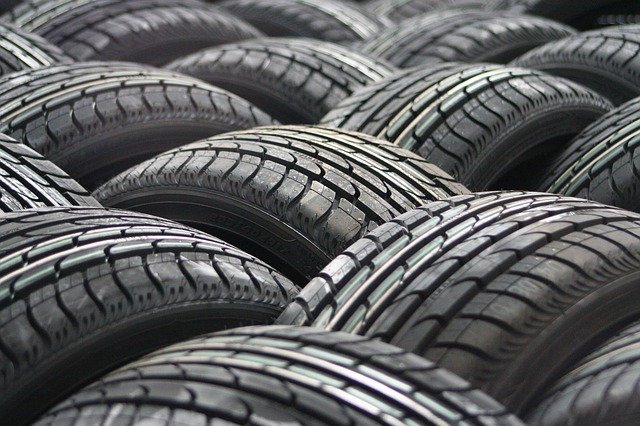
Facts and statistics about automobile waste in 2022
(Oilandgaspress) The worldwide vehicle recycling industry could reach $139.8bn by 2027
1. Car recycling is one of the largest industries in the US
Encouragingly, in the United States the automotive recycling industry is one of the largest. Recent reports showed that as many as 140,000 people were employed in the sector, with a total revenue of $32 billion across 9,000 nationwide locations. Across one year it’s estimated as much as 24 million gallons of motor oil and eight million gallons of engine coolant are repurposed as part of this process.
2. 95% of end-of-life vehicles are recycled every year
During an extensive investigation by the EU, it was found that as many as 95.1% of parts from end-of-life vehicles (ELVs) were reused as part of the recycling process. 89.6% of those were completely recycled, with the other 5.5% being repurposed in new or existing vehicles.
3. Europe, US, and Japan dominate the market
Given those numbers, it’s perhaps no shock that Europe and the US are among the leading names in the world of automotive recycling. These three regions combined account for as much as 70% of the total industry. That’s a huge percentage, given their total share of the ferrous scrap metal market is just 33%. It’s clear these regions have heavily concentrated their efforts on the repurposing of vehicles.
4. Millions of cars are recycled across the world every year
As many as 27 million ELVs are recycled across the world on an annual basis. This hugely encouraging figure speaks volumes about the increasing efforts being put into ensuring the raw materials that are used in cars don’t go to waste. Steel still remains the most recycled metal on Earth, so it’s perhaps no surprise that such high numbers of ELVs find themselves given a second life.
5. As many as one million cars a year are safely recycled in the UK
In the UK alone, as many as one million ELVs will be sent to recycling plants every year. This number equates to 25 million tonnes of raw materials which can be extracted from the vehicle, then given a new purpose. Steel, iron, copper, aluminium, rubber, and glass are the core components which can be recovered.
6. BMW want to boost recycled thermoplastics to 40%
In an effort to reduce waste on a wider scale, while also making recycling a core part of their enterprise, BMW have pledged to use as much as 40% repurposed thermoplastic in the construction of all new vehicles by 2030. They intend to take maritime plastic waste (such as netting and ropes) and convert as much of this as possible into parts for new cars. This is expected to reduce the carbon impact in the production stage by as much as 25%.

7. Cars produce four times as much CO2 as a coach
The need to reduce the carbon footprint of a car in the production stage is underlined by emission rates for the average passenger vehicle. The UK Government highlighted how much CO2 different types of vehicles produce during a single journey between Glasgow and London. They found a petrol car would produce 88kgs, and a diesel car 85kgs. By contrast, a coach only emits 22kgs.
8. Passenger vehicles emit 4.6 metric tons of CO2 a year
What’s more, it’s believed that the average passenger vehicle will emit as much as 4.6 metric tons of CO2 across one calendar year. That breaks down at a total of 404 grams for every mile travelled, if a car travels 11,500 miles in a year. For every gallon of gasoline burned, you can expect 8,887 grams of CO2 to be pumped into the atmosphere.
9. Passenger vehicles are nearly 50% less damaging than a plane
Cars do stand out as a significantly better option than planes. The direct and indirect impact of the same trip from London to Glasgow in an aircraft, would be a total emission of 157kgs of CO2. That’s close to twice the amount you would expect to produce driving the same distance. Nearly half this amount are the indirect effects of the flight, such as water vapours, aerosols, and nitrogen oxide.
10. 86% of car parts can be recycled
With the need to concentrate efforts on reducing their carbon footprint clear, it’s perhaps no surprise such focus is now placed on reusing and recycling car parts. As much as 86% an ELV will be used as part of the recycling process, which accounts for more than 18 million tonnes of steel being repurposed thanks to the automotive recycling industry alone, every year.
11. 85% of cars are turned into new metal
Of the 86% of car parts that can be recycled, a staggering 85% will be used to create new metal. Steel and iron are by far the most common metals which are taken from ELVs. Titanium, aluminium, and even magnesium are also potentially salvageable from a conventional passenger vehicle. Over a million cars are scrapped every year in the UK, with those numbers only set to rise as alternatives like EVs become the norm.
12. Tyres get turned into a variety of items
With a base compound of rubber, tyres are able to be repurposed for a wide variety of things. Some of the most common include mulch, the surface for a children’s playground, or even as running tracks. If it’s made of rubber, a recycled tyre could have been used in production.
13. 41% of ELV tyres are thrown into landfills
Despite this wide variety of purposes, as many as 41% of ELV tyres will be thrown into a landfill. This isn’t ideal, because the chemical composition of road tyres means they take longer to biodegrade than most other materials.
14. China accounts for nearly half of discarded tyres
China accounts for roughly 50% of all tyres thrown into landfill sites, with a total of 14.5 megatons being discarded on an annual basis. USA and Europe combine for another 23%, India for 12%, and the rest of the world for the remaining 20%. Despite that, it’s actually Brazil where the smallest total percentage of discarded tyres is recovered. Just 0.5% of all tyres from ELVs there will be recycled.
15. Canada has close to a 100% recycled tyre rate
Leading the way is Canada, who have close to a 100% rate of recovery for all discarded tyres. This is particularly impressive when you consider the Canadians have both winter and summer tyres, owing to the drastic conditions they face when the cold season starts. They may have twice the tyres to worry about, but they’re all being repurposed.

16. Recycling plants can repurpose 5,000 tonnes of tyres each year
Encouragingly, UK-based recycling plants are able to recycle up to 5,000 tonnes every year. This is the figure the UK Government set as the cap for how much one plant can realistically take on, rather than the national average – but it’s still encouraging to know this is a possi
17. The UK has a 95% ELV target
Part of the effort to increase the amount of raw material being given a second life is a clearly defined ELV target on the part of the UK government. This is set at 95% – meaning that as many as 95% of vehicles which are no longer in use will be recycled or repurposed, rather than left to rot.
18. 60% of recycled vehicles are passenger cars
In the UK passenger vehicles hold a 60% market share when it comes to the amount of value generated by being recycled. The remaining 40% is owned by commercial ELVs. At the end of June 2022, the RAC reported there to be as many as 33.1 million passenger cars on British roads.
19. Major growth expected for the industry by 2027
At the end of 2021, the UK car recycling industry was valued at as much as £1.32bn. By the year 2027, that figure is expected to rise to £1.89bn. That would mean a compound annual growth between 2022 and 2027 of 6.3% every year during that period. A major trigger in the increase is the expected prevalence of EVs between now and then.
20. 75 million windshields are replaced annually
It’s not just the metals and core components of a car which find a new life. Every year a whopping 75 million windshields will be replaced around the globe. Owing to the fact that windshields tend to be harder to recycle than conventional glass, a lot of these end up going to landfills, instead of being repurposed.
21. A new process exists to recycle 8-10 tonnes of windshield glass a day
As a result of that, further impetus is being placed on glass recyclers to find ways to ensure this happens less often. ScienceDirect highlights one such system, which is able to ensure that as much as 8-10 tonnes of windshield glass is repurposed on a daily basis. They found that the system recovered as much as 98.86% of all glass found in the windshields.
22. Ford cars account for more than 40,000 being scrapped
Ford cars are the most commonly scrapped vehicles. A 2022 report found that 29,525 Focus’ and 18,304 Fiestas were sent to the scrap heap for recycling this year. These models were the first and fourth most commonly scrapped respectively.
23. Vauxhall models are the second most scrapped cars
Second on the list was another familiar name on British roads, Vauxhall. While you might expect the Corsa to rank first here, they were actually only second (third overall in the UK) to their cousin the Astra. The former saw 21,717 sent to be scrapped, while the latter beat that total by a few hundred, coming in at 22,143.
24. It costs between £3-£8 a kilogram to recycle EV lithium-ion batteries
The lithium-ion batteries which are used in EVs have been a source of debate for some time. The environmental impact their production has is one area of the EV manufacturing process which detractors of electric cars regularly bring up. It’s good news then that it costs just £3-£8 per kilogram for them to be recycled.
Written by: Julie Daniels, Motor insurance comparison expert
Information Source: Read Full Report
Energy Monitors , Electric Power , Natural Gas , Oil , Climate , Renewable , Wind , Transition , LPG , Solar , Electric , Biomass , Sustainability , Oil Price , Electric Vehicles,

Oil and Gas News Undiluted !!! �The squeaky wheel gets the oil�


